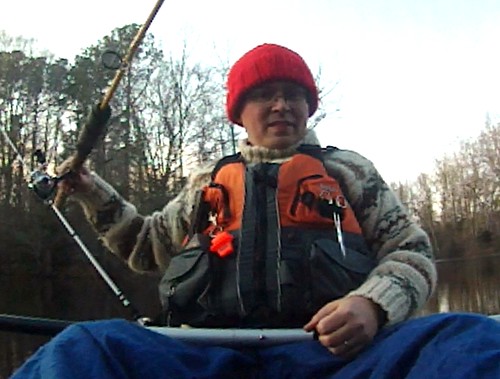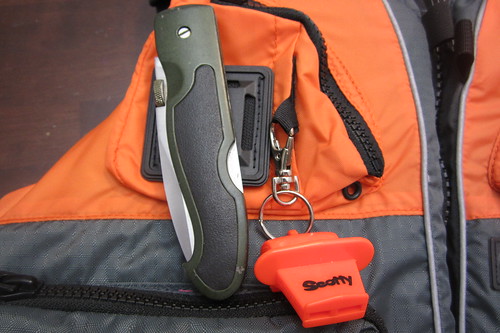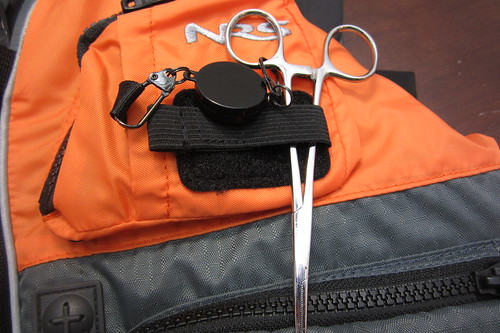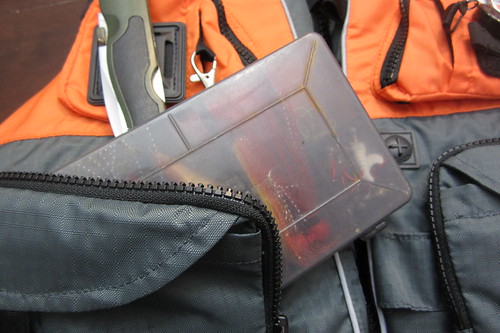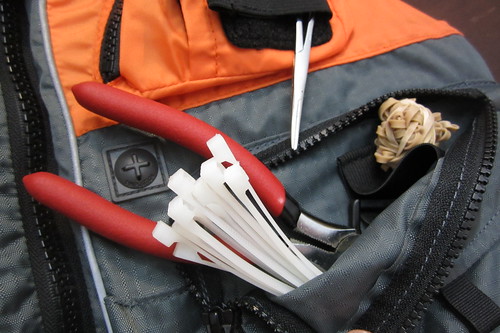Usually, when I fish from my kayak, I prefer to use a manually inflating PFD (Personal Flotation Device). It is supper small and light weight. I always forget that I am wearing it. The downside to this type of PFD is that I have to pull a string to inflate it.
This is fine for most of the small lakes and shallow areas I fish. There are no large boats in these areas. However, sometimes I do fish where I may get in a boating accident. If I am ever hit by a boat, I may be knocked out or hurt in some way that prevents me from inflating my PFD. For this reason, when I go out in big water I put on a traditional PFD. Specifically the NRS Chinook Mesh Back Fishing PFD
A bonus to using a traditional PFD is that it has lots and lots of pockets!
Well, that is if you choose a fishing PFD like I did. Most kayakers know that the NRS Chinook is one of the best PFD's available. It is probably the most popular.
This is not going to be a review of the NRS Chinook. Although, I would like to point out that they just updated this model, so you can find the old style (like the one I have) for a much lower price than normal. I think I paid around $60 for mine.
Every fisherman has their own set of priorities when outfitting their fishing vest. I consider two things when deciding what to attach to my vest. First is safety items. Second, I consider what I use the most. A kayak is cramped quarters. Reaching back, or opening a hatch takes time and makes noise.
Safety items are the most important things attached to your vest. They are worthless if left in a tackle box. If an accident happens you will most likely be ejected from your boat, so all you will have is what is on your person.
A knife and whistle are the minimum.
Whistles are mandatory here in Virginia. Don't get one of those crappy whistles. It needs to be loud and work when wet. The Scotty Life Saver Whistle is the best I have found.
is the best I have found.
Your knife should be quickly accessible, should open with one hand, and be stainless steel. Kayak for long and your knife will save your butt. Once I had to cut my anchor line because it got jammed on the bottom and the current was pulling me under. I use it very often to cut heavy line or even brush that I am snagged on.
I also keep my waterproof cell phone attached and stuffed inside my vest. A VHF radio would be a good choice too.
Forceps are my most used tool. I use then almost every time I land a fish. attaching them to a zinger is a no-brainer.
The other tool I use a dozen times or more each trip is line nippers. They are also attach to a zinger.
In one of the pockets I keep a small box of the lures I plan on using. One of the keys to catching fish is keeping your hooks sharp. With my extra lures immediately available, I am much more likely to retie if a hook starts to get dull.
In the other large pocket I keep a pair of heavy stainless steel fishing pliers, some zip ties, and some rubber bands.
I use the zip ties to position and keep pieces of bait on a hook. Rubber bands are used for the same thing in addition to making jigs weedless. Place the rubber band on the barb of the hook and stretch it over the eye of the jig head. Bam! weedless!
See that circle thing with the plus sign on it between the pliers handle in the picture above? That is a mount for pin on zingers. I never knew and had to ask. Just passing the knowledge on.
The Chinook has reflectors on the front shoulder. I cover these with cloth tape because they reflect a cameras flash at night, ruining pictures. I know this is less safe, but life is a balance of safety and function.
Depending on my plans, I may add a stick of scent, some sunblock, or some additional gear. The key is keeping everything you use often easily accessible.
Let me know in the comments what you keep in your fishing vest!

